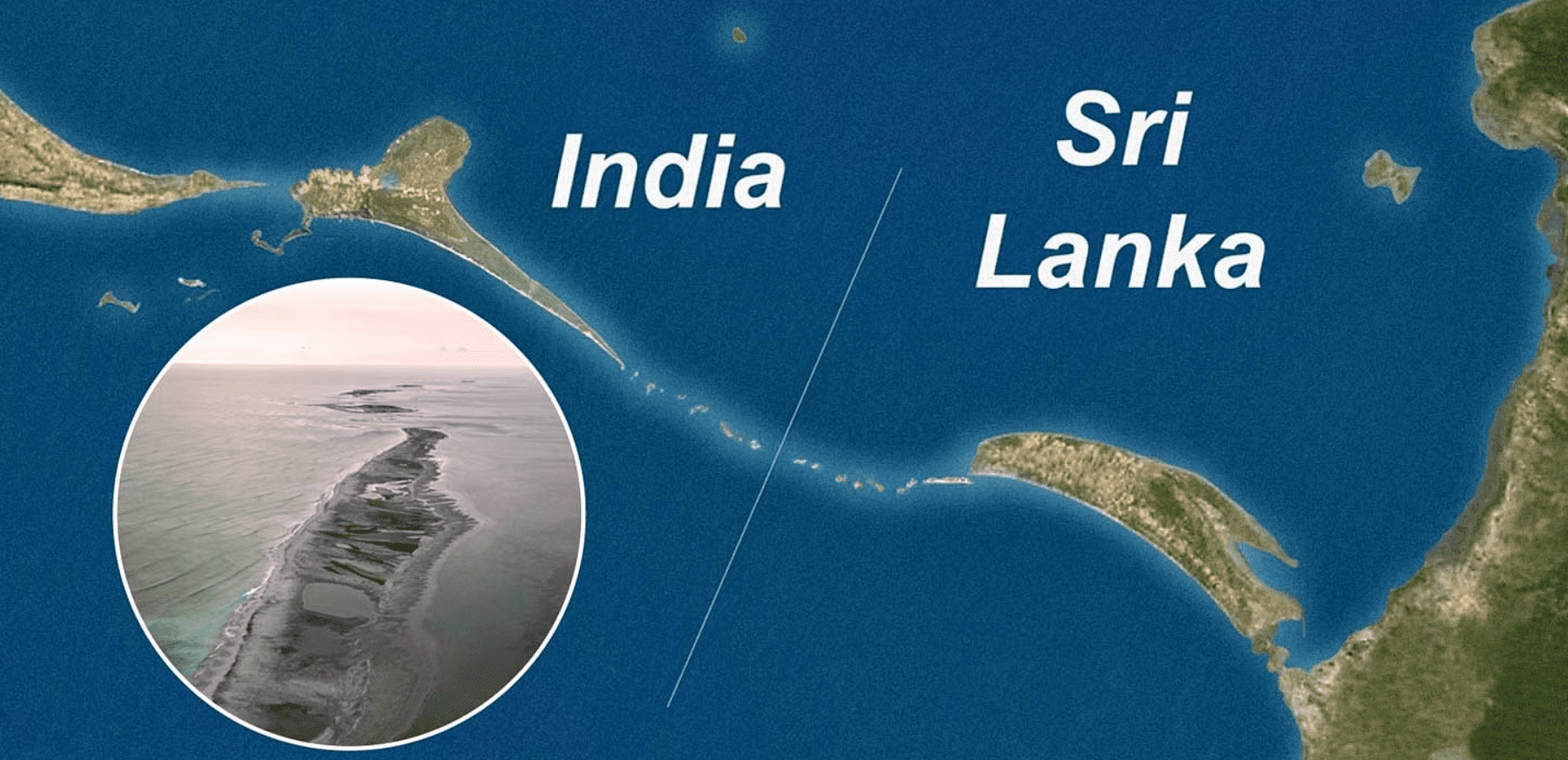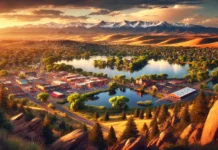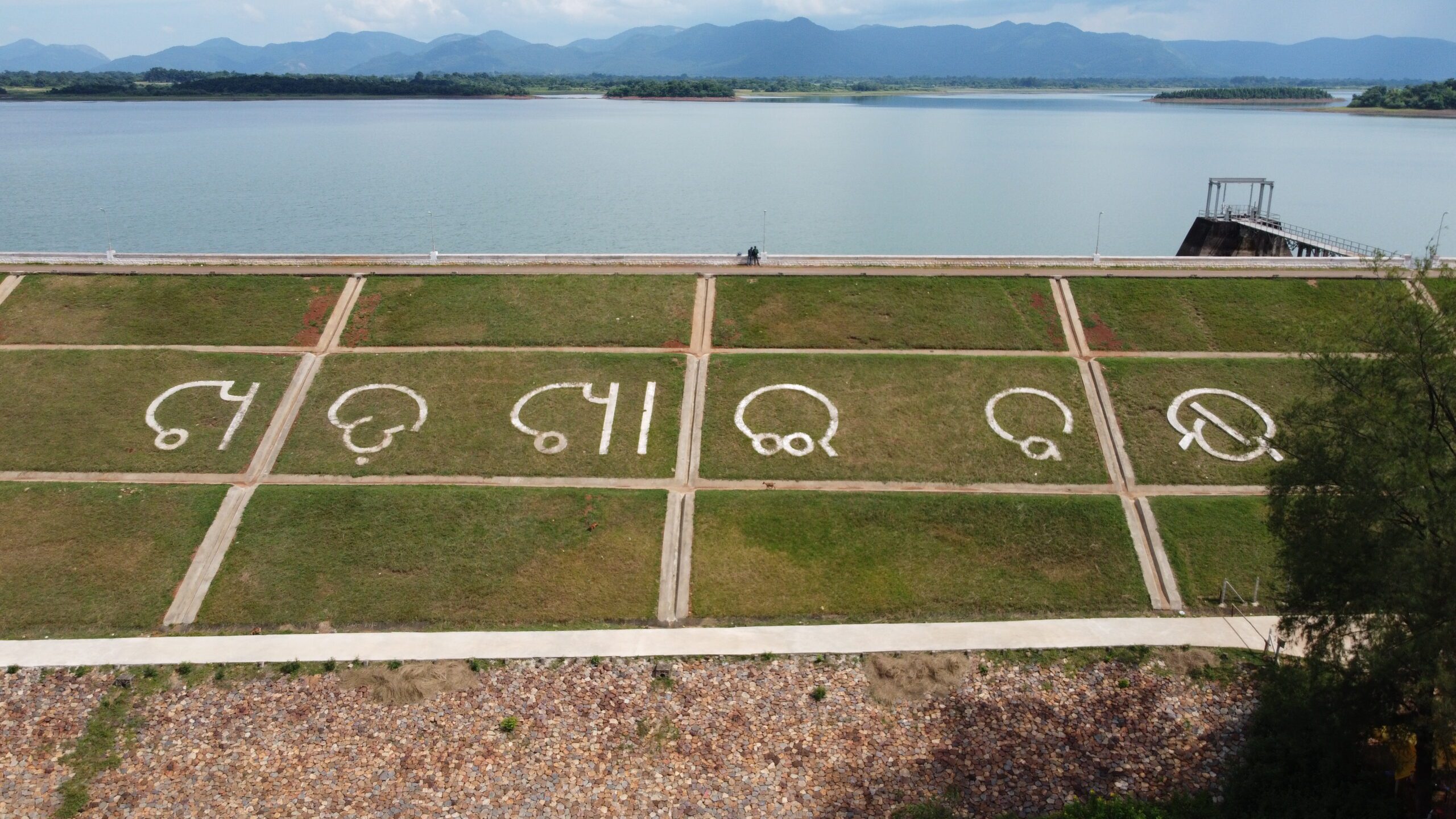Ram Setu or Adam’s Bridge – Exploring the Scientific, Historical, and Mythological Significance
Ram Setu or Adam’s Bridge – Exploring the Scientific, Historical, and Mythological Significance: Off the southeastern coast of India lies a 30-mile-long shoal, located just under the ocean’s surface, creating a bridge of sand and other debris that stretches all the way to the northwestern coast of Sri Lanka.
This shoal separates the Gulf of Mannar on one side from the Palk Strait on the other and has hindered regional trade for centuries. Small boats and dinghies can navigate the area, but large ocean-going vessels must travel around Sri Lanka, adding an additional 250 miles to any journey.
In 2005, the Indian government approved the monumental Sethusamudram Canal Project to dredge the ocean floor and create a channel through the area for large ships, boosting the efficiency of regional trade. However, the debris under the water has significant spiritual importance to millions, even billions of people. Hindus view it as the ancient artificial Rama Setu bridge, constructed by the legendary figure Rama to facilitate his army crossing from India to Sri Lanka to rescue his abducted wife Sita from the evil King Ravana.
Historical records show that what is now a shoal was once a transferable bridge that could be crossed on foot until a storm breached it in 1480. Islamic tradition tells of Adam, the first man and a 100-foot tall giant, falling on Earth in Sri Lanka after his expulsion from heaven. He constructed a massive bridge to cross into mainland Asia to find Eve, and like Hindus, Muslims believe this is not just another ocean formation but an ancient structure they call Adam’s Bridge.
History Of Ram Setu
For Hindus, it is an ancient causeway constructed by the legendary figure Rama to facilitate his army’s crossing from India to Sri Lanka to rescue his abducted wife, Sita, from the evil King Ravana. Hindus view it as an ancient artificial bridge known as Rama Setu, meaning the Bridge of Rama. Interestingly, historical records show that what is now a shoal was once above water, a transferable bridge that could be crossed on foot until 1480 when it was breached by a storm and slowly overcome.
Additionally, Islamic tradition tells of Adam, the first man who was also a 100-foot tall giant, who fell on Earth in Sri Lanka after his expulsion from heaven. To escape from the island and find Eve, he constructed a massive bridge to cross into mainland Asia. Like Hindus, Muslims also believe this is not just another ocean formation, but an ancient structure they call Adam’s Bridge.
In fact, one of the highest peaks in Sri Lanka is named after Adam, the Adam’s Peak, which, according to the story, is the place where Adam first landed on Earth. On an altar on the top of the peak, we can find a giant footprint that pilgrims from all over the world visit. Due to this deep religious significance, the Sethusamudram Canal Project immediately became the subject of great controversy when it was announced, causing an uproar amongst many politicians, religious groups, and ordinary people.
However, if we look closely at the bridge and its mysterious creation, it becomes clear that the controversy goes deeper than religion. It may challenge humanity’s established history and begin to reveal mythical secrets that have long been lost. The Ramayana is one of the two most important epics, along with the Mahabharata, in all of Hinduism. Composed over the course of nearly a millennium, it is made up of about 24,000 verses, making it one of the largest ancient epics in world literature.
Within these verses is the narration of the life of Rama, the legendary prince of the ancient kingdom of Kosala, said to have existed millions of years in the past in the Treta Yuga, a mythological period that began 2,165,000 years ago. The story becomes important here when Rama enters into exile in the forest with his wife, Sita.
During this time, Sita is abducted by Ravana, a demon king of Lanka, a rival kingdom. Seeking to recover his wife, Rama raises a mighty army of creatures called Vanara, human-like monkeys who live in the forest, and sets off in pursuit. After some time, Rama and his army reach the coast of India, from which they can see across the ocean to the distant shores of Sri Lanka, where Sita has been taken.
In Sri Lanka, the legendary tale of Rama defeating Ravana and rescuing his wife before returning home is more than just a myth for many Hindus. It is considered a factual record of history rather than an allegory or religious teaching.
However, the debate over the existence of Rama Setu, a bridge that allegedly connects India to Sri Lanka, has been ongoing. When the government of India proposed the Sethusamudram Canal Project in the early 2000s, they enlisted the services of Dr. Badrinarayanan, the director of the Geological Survey of India, to conduct a study of Ram Setu Bridge.
The government hoped to collect evidence that the shoal was a natural formation to use against opponents and critics. However, when Badrinarayanan and his team began drilling boreholes, they discovered that the coral and boulders on the bridge were sitting on top of loose sand, which suggested that they were not naturally occurring.
Further examination revealed that the boulders had been transported to the location and dumped there, possibly by someone using them as a causeway. This astonishing discovery challenged the long-held belief that Rama Setu was a construction built by the patriarchs of Hinduism millions of years ago and recorded in the Ramayana.
In 2017, a team of scientists from India and Sri Lanka conducted a study of the area using satellite imagery, drilling, and coring samples from the shoals. The study revealed that the chain of shoals could have formed naturally through sedimentation and rising sea levels. However, some experts still believe that Rama Setu is an artificial structure and that the scientific evidence is inconclusive.
Ram Setu Bridge: Facts About the Structure
The Ram Setu Bridge, also known as Adam’s Bridge or Nala Setu, has been the subject of debate for several decades regarding whether it is an artificial or a natural formation. In addition to this, there are other surprising facts about this bridge, including its origins and history. The name Adam’s Bridge comes from an Islamic text that mentions Adam’s Peak in Sri Lanka, while Nala Setu is named after Nala, the architect who designed the bridge in the epic Ramayana.
Studies conducted on the beaches and oceans around the bridge have revealed carbon dating that coincides with the time frame of the Ramayana. While there are various theories about the history and truth behind the bridge, one suggests that a land connection between India and Sri Lanka existed during the Ice Age. Another theory posits that Sri Lanka was once part of the mainland Indian subcontinent before breaking away around 125,000 years ago.
Overall, the Ram Setu Bridge remains an intriguing and mysterious structure, with a rich history and cultural significance that continues to fascinate people around the world.
How To Reach Ram Setu
To reach Rama Setu, one can visit Dhanushkodi, located about 20 km from Rameshwaram town. Since the town was swept away by a cyclone in 1964, there is no concrete road connectivity to Dhanushkodi, and visitors typically travel by jeep.
From Dhanushkodi beach, tourists can hire boats to reach the sand dunes of Rama Setu. Visiting this site can add an exciting element to any Rameshwaram tour.
In conclusion:
Rama Setu or Adam’s Bridge is a geological formation located in the Palk Strait between India and Sri Lanka. According to Hindu mythology, it is believed to have been built by Lord Rama and his army of monkeys and bears to reach Lanka to rescue his wife, Sita.
However, the existence and origins of this bridge have been a subject of debate among scientists and religious scholars for several years. While some believe that it is a natural formation created by sedimentation and sea currents, others argue that it is an artificial structure. Regardless of its origins, Ram Setu Bridge remains a popular pilgrimage site for many Hindus, and a visit to this site can add a unique and fascinating dimension to any tour of Rameshwaram.
Related Articles: Sigiriya Rock Fortress – Sri Lanka’s Engineering Masterpiece of the Ancient World










